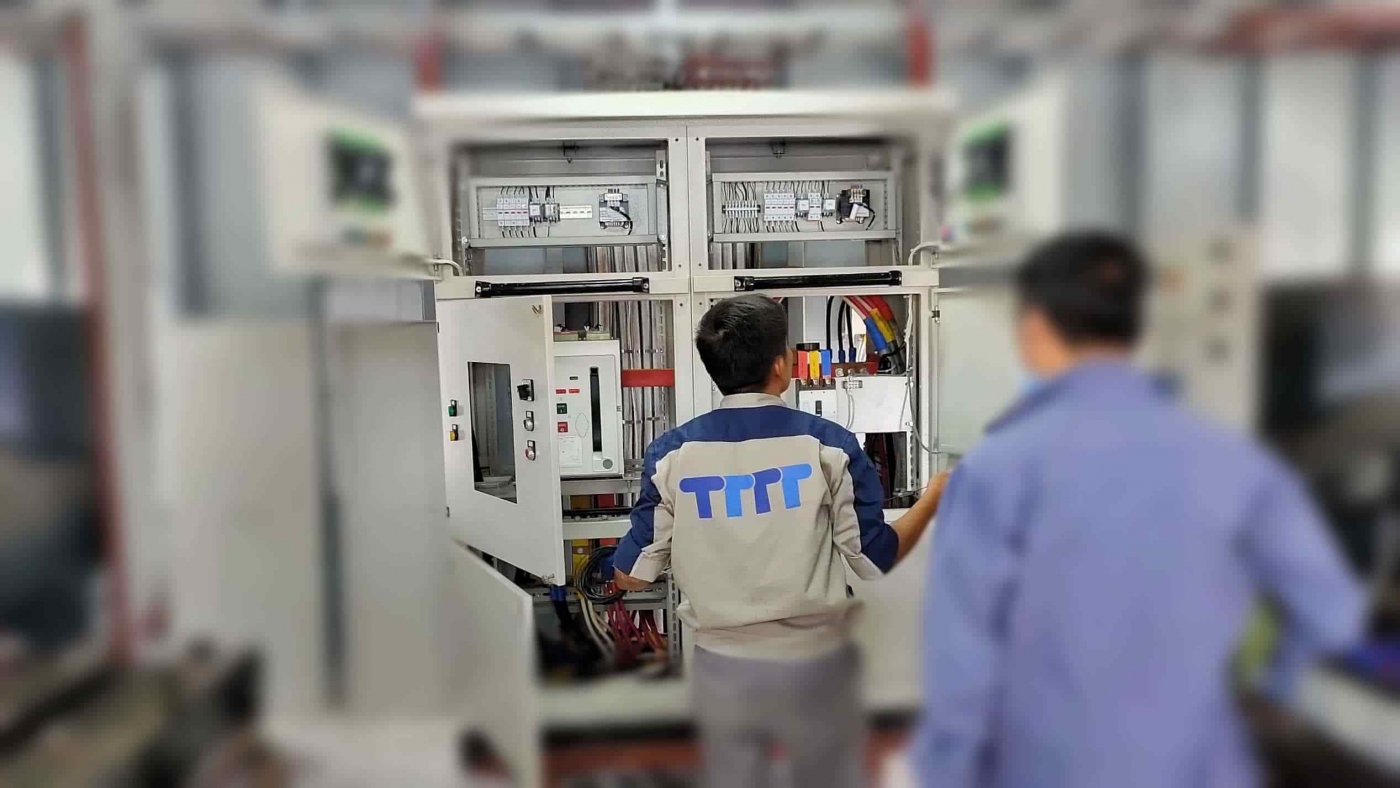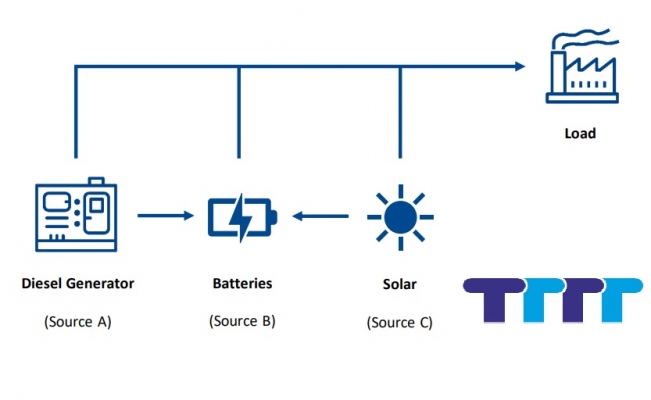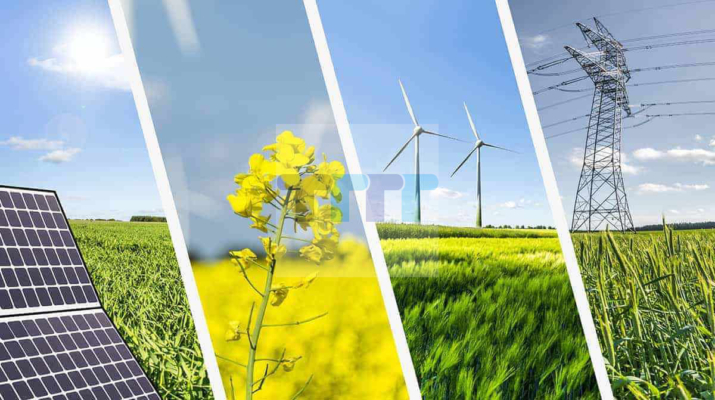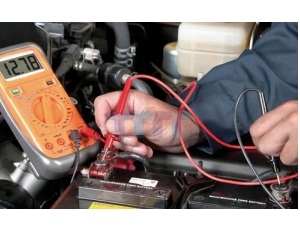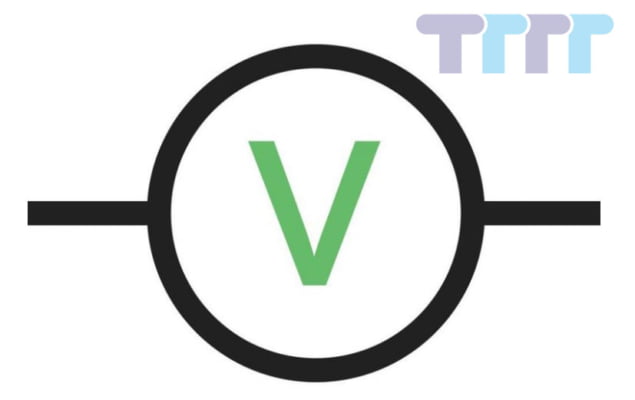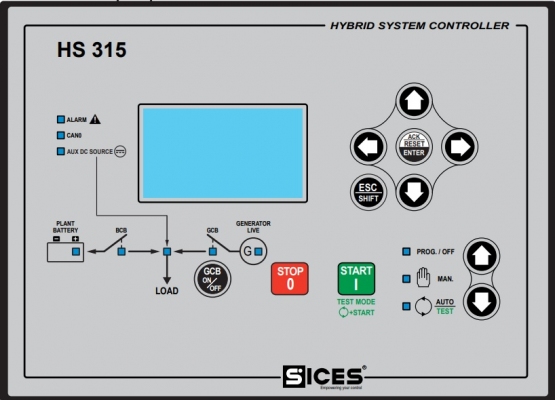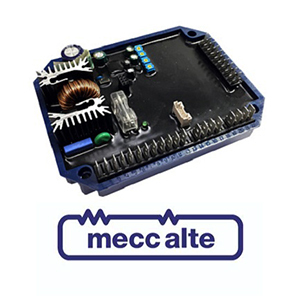Offshore wind power is emerging as a promising renewable energy solution with great potential to meet growing energy demand and reduce environmental impacts. This paper will analyze the potential, technology, benefits and challenges of offshore wind power, especially in the context of Vietnam. We will explore the technical, economic, social and environmental aspects of this energy source, as well as the role of policy and investment in promoting the development of the offshore wind industry.
You may be interested in the following articles:
- Learn about the development potential of Bac Lieu wind power.
- What is wind power?
Contents
Offshore wind power: Huge potential and challenges
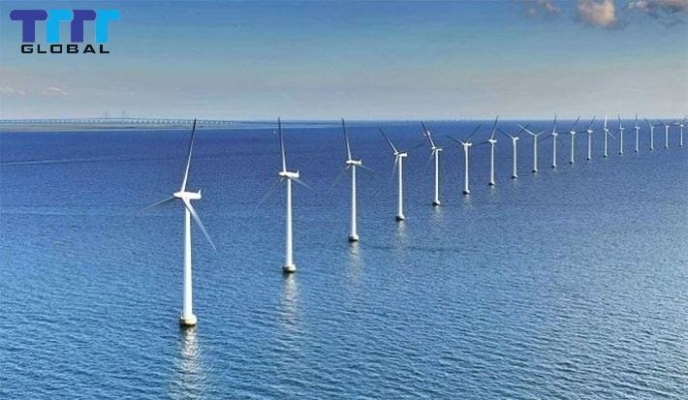
Potential of offshore wind power
Offshore wind power TTTT Global is considered one of the most potential renewable energy sources in the world. With a large sea surface area and favorable wind conditions, many countries are aiming to develop offshore wind farms to take advantage of this clean energy source. In Vietnam, with a coastline of more than 3,000 km and a large exclusive economic zone, the potential for offshore wind power development is significant.
According to recent studies, the technical potential of offshore wind power in Vietnam can reach hundreds of gigawatts. This is not only enough to meet domestic electricity demand but can also be exported to neighboring countries. Moreover, the more stable and stronger wind speed at sea compared to onshore helps offshore wind turbines operate more efficiently, generating more electricity than onshore turbines.
Key Challenges
Despite its huge potential, offshore wind development also faces significant challenges. The first is the issue of cost. Building and operating offshore wind farms requires large initial investments, including costs for turbines, foundations, submarine cables and substations. However, with the development of technology and increasing scale of production, these costs are gradually decreasing.
The second challenge is technical. Installing and maintaining wind turbines in harsh marine environments requires advanced technology and highly specialized skills. Issues such as corrosion caused by seawater, large waves and strong winds need to be addressed to ensure the longevity and performance of the turbines.
The third challenge is related to infrastructure. Transmitting electricity from offshore wind farms to the national grid requires complex submarine cable systems and substations. In addition, specialized seaports and fleets also need to be developed to serve the construction and maintenance of wind farms.
See more: Mecc Alte ECO40 C Alternator.
Solutions and directions
To overcome these challenges, close cooperation between the government, businesses and research institutions is needed. Building a clear legal framework and appropriate support mechanisms is important to attract investment in this field. At the same time, investing in technology research and development, as well as training high-quality human resources, will help reduce costs and increase the efficiency of offshore wind power projects.
In addition, developing a domestic supply chain for the offshore wind industry is also an important direction. This not only helps reduce costs but also creates job opportunities and promotes local economic development. Finally, learning from the experiences of leading countries in this field such as Denmark, Germany or the UK will also help Vietnam avoid mistakes and apply best practices in the process of developing the offshore wind power industry.
Offshore wind power technology: Applications and prospects
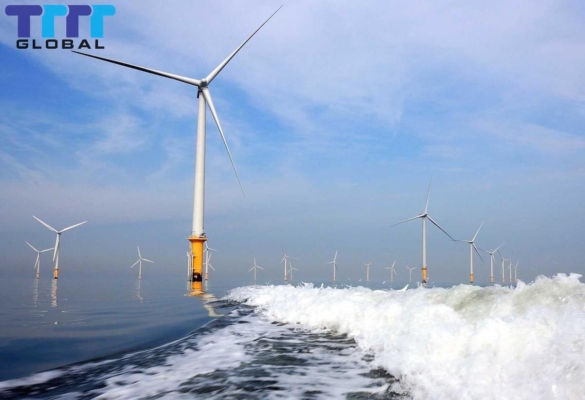
Types of offshore wind turbines
Offshore wind technology has made significant progress in recent years, with the introduction of a variety of high-efficiency wind turbines that are suitable for marine conditions. There are currently two main types of offshore wind turbines: bottom-fixed and floating.
Bottom-fixed wind turbines are the most common type today, suitable for shallow waters less than 60 metres deep. They are fixed to the seabed with piles or concrete foundations. They have the advantage of proven technology and relatively low construction costs.
Floating wind turbines are a newer technology, designed for waters deeper than 60 metres. They are anchored to the seabed with cables and can move gently with the waves and wind. Although the current cost is high, this technology has great potential in the future, especially in areas with great depth.
New technology trends
One of the important trends in offshore wind power technology is the increase in turbine size and capacity. Modern turbines can reach a capacity of up to 15 MW, with a blade diameter of up to 220 meters. This significantly increases efficiency and reduces the cost of electricity production.
In addition, new material technology is also being applied to increase the durability and reduce the weight of turbines. Advanced composites and nanomaterials are being researched to produce lighter, more durable and more efficient blades.
Remote control and monitoring technology is also being strongly developed. Smart sensor systems and big data analysis help predict and detect problems early, thereby optimizing turbine operation and maintenance.
Application prospects in Vietnam
For Vietnam, the application of offshore wind power technology opens up many promising prospects. With a long coastline and many areas with favorable wind speeds, Vietnam can apply both bottom-fixed turbine technology in shallow waters and floating turbines in deep waters.
However, to effectively apply these technologies, Vietnam needs to invest in research and development, and build appropriate infrastructure. Cooperating with countries and businesses with experience in this field will help Vietnam quickly access the most advanced technologies.
In addition, developing domestic supporting industries is also an important direction. This not only helps reduce costs but also creates opportunities for Vietnamese businesses to participate in the global supply chain of the offshore wind industry.
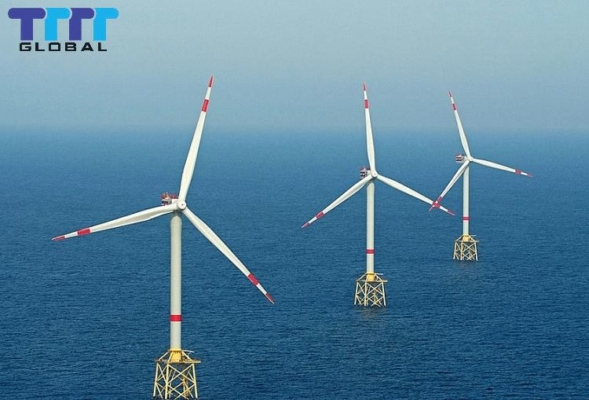
Job Creation and Local Economic Development
Offshore wind power development brings significant economic and social benefits to Vietnam. One of the most important benefits is the creation of many new jobs. The industry requires a diverse workforce, from engineers and scientists to technical workers and operators.
According to studies, every megawatt of offshore wind power installed can create about 15-20 direct and indirect jobs. With the goal of developing tens of gigawatts of offshore wind power in the coming decades, the industry has the potential to create hundreds of thousands of new jobs for Vietnam.
In addition, the development of the offshore wind industry also promotes local economic development. Seaports and coastal industrial zones will be invested and expanded to serve the production, assembly and transportation of wind turbine components. This will create a ripple effect, promoting the development of supporting industries and related services.
Reducing dependence on fossil fuels
Another important benefit of offshore wind power is that it helps reduce Vietnam’s dependence on fossil fuels. Currently, Vietnam still relies heavily on coal and gas for electricity production, which not only pollutes the environment but also increases the risk of energy security instability.
By developing offshore wind power, Vietnam can diversify its electricity supply, reduce fossil fuel imports and enhance national energy security. This also helps Vietnam reduce greenhouse gas emissions, contribute to global efforts to combat climate change and fulfill international commitments on sustainable development.
Promoting innovation and technology transfer
Offshore wind power development also promotes innovation and technology transfer. To build and operate offshore wind farms, Vietnam needs to access and master many advanced technologies. This will motivate domestic universities, research institutes and enterprises to invest in research and development.
Furthermore, through cooperation with experienced foreign companies, Vietnam will be supported in technology transfer and project management capacity improvement. This cooperation not only helps to improve the technological level but also opens up opportunities for the development of new products and services suitable for the domestic market.
Technology transfer is also important in building a sustainable economy. By applying modern and environmentally friendly technologies in the offshore wind industry, Vietnam can solve many problems related to pollution and resource scarcity, while protecting the living environment for future generations.
Improving quality of life
An undeniable benefit of offshore wind power is its ability to improve the quality of life for people. When there is clean and renewable electricity from wind power, electricity costs will decrease, helping consumers save on monthly living expenses.
In addition, the development of the offshore wind power industry also contributes to improving infrastructure in coastal areas. Wind power projects are often accompanied by investments in transportation, ports and other utilities, thereby increasing real estate values and creating more developed urban areas.
In addition, the use of renewable energy sources such as wind power also helps protect public health by reducing air pollution from burning fossil fuels. This is towards a sustainable development future and protecting the health of Vietnamese people.
See more: Wind generator for sale.
Company name:
TTTT GLOBAL co Ltd,.
- Address: Landmark 4 Building, Vinhomes Central Park, 720A Dien Bien Phu Str, Ward 22, Binh Thanh District, Ho Chi Minh City, Vietnam.
- Website: https://ttttglobal.com/en/
- Hotline: +84286 2728 334
- Email: Info@ttttglobal.com

